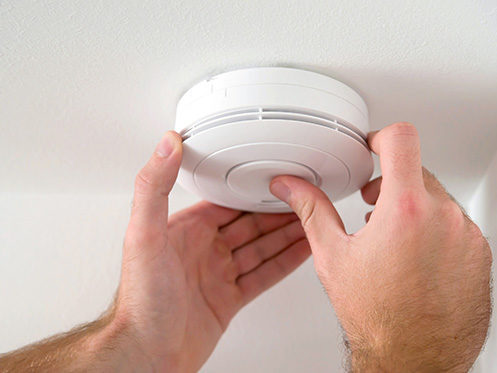Imagine standing in the center of a football field and seeing someone approaching us, firing a loud gun in the air. The noise of the gun and fear of our safety would cause us to hurry away in the other direction.
Seeing and hearing a dangerous situation helps us respond, but what if another danger is every bit as threatening but can’t be seen or heard? What if this danger will damage your body in 50 different ways and is known as the “silent killer”?
October is Indoor Air Quality month. Carbon monoxide is a “silent killer” that could be considered a “loaded gun”. It silently kills because it is odorless and tasteless.
Occasionally we can detect some of the carriers of carbon monoxide like the smelly fumes from the car in front of us, however, the really dangerous carbon monoxide is what attacks us without our knowledge. It quietly fills the room around us and oxygen levels go down.
Some early signs of carbon monoxide poisoning are shortness of breath, mild nausea, and headaches. Even low levels over time can have long-term effects on our health. There are no safe levels of carbon monoxide.
As carbon monoxide exposure increases there will be more severe headaches, dizziness, mental confusion, increased nausea, and eventually death.
Since many of these symptoms are similar to those of the flu, food poisoning, or other illnesses, carbon monoxide poisoning as the cause is often ignored. We tend to assume we are always safe.
A common source of carbon monoxide poisoning is natural gas water heaters and furnaces. The risk goes up dramatically when routine maintenance is ignored. Burners that are not cleaned will result in improper air mixtures and increased levels of carbon monoxide. Flames will be cooler and flue discharge is affected, which can result in soot plugging the flue piping.
Furnaces have an additional risk of cracked or otherwise defective internal heat exchangers that fail quite often. Often hidden cracks are difficult to detect.
John Henry's Plumbing, Heating, Air, and Electrical dissects all furnaces that are replaced when we tear them down to salvage the metals. Salvaging the metals is environmentally the right thing to do, but the biggest benefit is in understanding why equipment fails so we can improve training. When technicians are more aware of the locations of hidden cracks in heat exchangers they are better troubleshooters.
Please be aware that unvented heating equipment is not legal in a structure with a bedroom in Lancaster County. This includes ventless freestanding fireplaces and heaters sold locally. In good condition this ventless heating equipment is dangerous, but in the poorly maintained condition it’s like a “loaded gun”.
Other sources that can produce high levels of carbon monoxide are unvented appliances such as natural gas stoves.
Some early signs of elevated carbon monoxide levels are stale or stuffy air and excessive moisture on windows or walls.
A sign of back drafting or dirty burners is soot buildup around appliance vents, such as on top of water heaters. Yellow or orange flames on burners of gas appliances are typically an indication of higher carbon monoxide-producing flames, although clean blue flames can produce high levels.
According to the U.S. Department of Health and Human Services, Nebraska is known for the highest level of carbon monoxide deaths in our nation from 1999 to 2004. This does not include other health incidents of carbon monoxide poisoning before death.
High carbon monoxide levels are such a concern that our technicians are required to check carbon monoxide levels when they enter homes or businesses.
They consistently find high-level risks in heating equipment that can produce carbon monoxide poisoning.
John Henry's Plumbing, Heating, Air, and Electrical has saved lives and reduced the potential health risks to many customers. Our primary goal is to save even more lives. Our goal won’t let us be silent!
Another “good neighbor” that has saved lives is Lincoln Electric System through their Sustainable Energy Program. This program is designed to reduce the need for increased electrical power production and may have a 300% or better payback for investment, but the main side benefit is it promotes the replacement of defective fossil fuel burning equipment. A program that saves lives is priceless!
Please, get your natural gas heating equipment serviced before another cold Nebraska winter. If friends, loved ones, or you do not have a Service Maintenance Agreement that automatically gets that heating equipment serviced it’s time to call John Henry's Plumbing, Heating, Air, and Electrical. The life you save may be your own!

